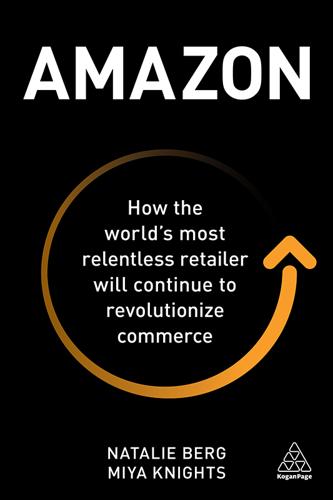random stow
description: a warehouse management strategy where items are stored in any available location, as opposed to a fixed or designated location.
2 results

Arriving Today: From Factory to Front Door -- Why Everything Has Changed About How and What We Buy
by
Christopher Mims
Published 13 Sep 2021
Caches are now so important to modern CPUs, which run every computer you encounter on a daily basis, from your phone and laptop to your car and countless invisible, embedded computers in household gadgets and connected civic infrastructure, that under a microscope, the physical area of a CPU taken up by these caches can be greater than half its total size. Having helped to design systems to manufacture microchips, and having run a division of Apple Computer, Mick understood the basics of CPU architecture. He could see how it could be applied to storing physical objects, rather than bits. Thus was born “random stow,” or the idea that the best way to get goods into and out of shelves in a warehouse is to toss them anywhere they’ll fit, rather than worrying about storing them according to some sort of organizational system. It worked because, as with any system based on the principle of random access, the stuff that’s close enough at hand, that’s in the cache of a CPU or a warehouse, is all pretty much equally and quickly accessible.
…
That’s why it’s not up to Tyler which items have been delivered to him in which totes, and which bin on which pod he’ll be asked to stuff them in—all of that is decided by algorithms running under the umbrella of Amazon’s warehouse management system, and more broadly, its globe-spanning inventory management system. By asking Tyler to put our USB charger in one bin, allowing him to stick an identical one in another bin of his choosing, and, overall, distributing the dozens of chargers that arrived at this distribution center in a single box across dozens of mobile shelving units, the random stow system maximizes the chances that a mobile shelf with one of these chargers in it is readily accessible when an Amazon customer orders one and it must be extracted from the storage system and delivered to that person. In order to make rate, every fourteen seconds or so, Tyler must grab an item, scan it, and stuff it into a bin.
…
“If you had multiple copies of a memory or document in our cloud computing system, you’re going to get faster retrieval across multiple different nodes, some of which are geographically distributed. It’s very similar with our inventory: if you want speed of access, it’s great to have [multiples of a single item] spread throughout different pods.” Random stow, he adds, “happens to also be great for high-speed random access to inventory.” The Kiva system of shelves sitting atop mobile drive units “was a computer-based architecture,” says Mick. “In front of the picker, you have a queue of six to eight pods waiting to be processed, and we called that ‘L2 cache.’

Amazon: How the World’s Most Relentless Retailer Will Continue to Revolutionize Commerce
by
Natalie Berg
and
Miya Knights
Published 28 Jan 2019
According to Cooper Smith, an analyst at research firm Gartner L2, Amazon ‘now has warehouses within 20 miles of half the US population’.2 This closes the last-mile gap to the densest urban populations but is still comparatively further than the average distance of a US consumer to a Walmart, which is 6.7 miles.3 The Prime Now ‘pickers’, so-called in the logistics industry because they pick and pack orders in FCs, use mobile handheld barcode-reading devices to locate items. Space is saved by using a ‘random stow’ system, instead of designated stock areas that more automated warehouse management systems require. While this can lead to some incongruous items being stored alongside each other, where items are put on the aisles of shelving is left down to the pickers to maximize use of space. An Amazon spokesperson reported that random stow enhances picking accuracy; it might be easier to make a mistake if many different versions of the same item were stored in the same location.
…
Orders are then fulfilled using a number of delivery methods; the company’s bike courier experiments in Manhattan received a lot of publicity and fuelled rumours of a move into express delivery in the weeks before Prime Now’s launch. Last-mile labour From the perspective of last-mile labour costs, Prime Now differs to the rest of Amazon’s fulfilment infrastructure in its intensive use of pickers, as well as its random stow system. This makes it more reliant on more human labour than in its larger FCs, where its Kiva warehouse robotic sortation systems take on more of the traditional picking and packing tasks. Its use of express courier services to deliver Prime Now orders is also another extra labour-intensive expense Amazon must absorb for the price of having the fastest and most extensive last mile.